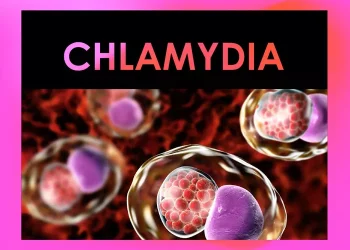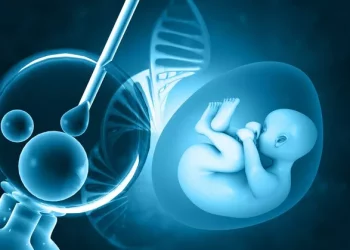Azoospermia, a condition characterized by the absence of sperm in the ejaculate, is a significant cause of male infertility. Understanding why azoospermia occurs involves exploring various underlying mechanisms and conditions that impact sperm production and delivery. This article delves into the causes of azoospermia, classified broadly into two categories: obstructive and non-obstructive azoospermia.
What is Azoospermia?
Azoospermia affects approximately 1% of the male population and is present in 10-15% of infertile men. The condition is diagnosed when a semen analysis reveals no sperm after centrifugation, which concentrates any present sperm cells. While a single test indicating azoospermia can be alarming, it is crucial to conduct multiple tests to confirm the diagnosis accurately. Understanding the different types of azoospermia is essential for proper diagnosis and treatment.
Types of Azoospermia
Azoospermia is categorized into two primary types: obstructive and non-obstructive. Each type has distinct causes and implications for treatment.
Obstructive Azoospermia
Obstructive azoospermia occurs when there is a blockage in the male reproductive tract, preventing sperm from being ejaculated. This type can be due to congenital, infectious, or iatrogenic factors.
Congenital Causes
Some men are born with abnormalities that obstruct the sperm‘s pathway. Common congenital causes include:
- Congenital Bilateral Absence of the Vas Deferens (CBAVD): This condition is often associated with cystic fibrosis. Men with CBAVD lack the tubes (vas deferens) that carry sperm from the testes to the urethra.
- Epididymal Obstruction: The epididymis, a tube where sperm matures and is stored, can be blocked. This blockage can occur at birth due to abnormal development.
- Ejaculatory Duct Obstruction: This can result from cysts, calcifications, or other blockages that prevent sperm from entering the urethra.
Infectious Causes
Infections can lead to scarring and blockages in the reproductive tract. Common infections include:
- Sexually Transmitted Infections (STIs): Infections like gonorrhea and chlamydia can cause inflammation and scarring in the vas deferens or epididymis.
- Tuberculosis: This infection can cause granulomas and strictures in the genital tract, leading to blockages.
Iatrogenic Causes
Surgical procedures can inadvertently cause blockages. Common surgical causes include:
- Vasectomy: This surgical procedure, intended for permanent contraception, involves cutting and sealing the vas deferens, leading to obstructive azoospermia.
- Hernia Repairs: Surgery to repair inguinal hernias can sometimes damage the vas deferens, leading to obstruction.
Non-Obstructive Azoospermia
Non-obstructive azoospermia occurs when there is a problem with sperm production in the testes. This can be due to genetic, hormonal, or environmental factors.
Genetic Causes
Genetic abnormalities can severely impact sperm production. Common genetic causes include:
- Klinefelter Syndrome: Men with this condition have an extra X chromosome (47,XXY). This leads to small testes and impaired sperm production.
- Y Chromosome Microdeletions: Certain regions on the Y chromosome are crucial for sperm production. Deletions in these areas can lead to azoospermia.
- Mutations in Specific Genes: Mutations in genes involved in spermatogenesis, such as the androgen receptor gene, can lead to defective sperm production.
Hormonal Causes
Hormonal imbalances can disrupt the delicate hormonal regulation of spermatogenesis. Key hormonal causes include:
- Hypogonadotropic Hypogonadism: This condition is characterized by low levels of gonadotropins (LH and FSH), which are necessary for stimulating the testes to produce sperm.
- Hyperprolactinemia: Elevated levels of prolactin can inhibit gonadotropin release, impairing sperm production.
- Thyroid Disorders: Both hypothyroidism and hyperthyroidism can affect hormone levels and, subsequently, sperm production.
Environmental and Lifestyle Factors
Certain environmental and lifestyle factors can impair sperm production. These include:
- Exposure to Toxins: Chemicals like pesticides, heavy metals, and radiation can damage the testes and impair sperm production.
- Medications: Some medications, such as chemotherapy drugs, can affect spermatogenesis.
- Lifestyle Factors: Smoking, excessive alcohol consumption, and illicit drug use can negatively impact sperm production.
See Also: Do You Know the Causes and Effects of Azoospermia?
Diagnostic Evaluation
Diagnosing azoospermia requires a comprehensive evaluation to determine the underlying cause. The diagnostic process typically involves:
Medical History and Physical Examination
A detailed medical history can reveal potential causes such as previous infections, surgeries, or family history of genetic disorders. A physical examination focuses on the size and consistency of the testes and the presence of any palpable abnormalities.
Hormonal Assessment
Hormonal evaluation includes measuring levels of testosterone, LH, FSH, and prolactin. These tests help identify hormonal imbalances that could be affecting sperm production.
Genetic Testing
Genetic testing is crucial for identifying chromosomal abnormalities, Y chromosome microdeletions, and specific gene mutations. This testing is particularly important in cases of non-obstructive azoospermia.
Imaging Studies
Imaging studies, such as scrotal ultrasound and MRI, can help identify structural abnormalities and blockages in the reproductive tract.
Testicular Biopsy
A testicular biopsy involves obtaining a small tissue sample from the testes. This procedure helps differentiate between obstructive and non-obstructive azoospermia. It also provides information about the presence of spermatogenesis.
Treatment Options
Treatment for azoospermia depends on the underlying cause and the type of azoospermia.
Treating Obstructive Azoospermia
Treatment options for obstructive azoospermia focus on relieving the blockage and restoring sperm flow. These options include:
Surgical Reconstruction
Vasovasostomy and Vasoepididymostomy: These microsurgical procedures reconnect the vas deferens or bypass the blockage, allowing sperm to reach the ejaculate.
Transurethral Resection of the Ejaculatory Ducts (TURED): This procedure removes obstructions in the ejaculatory ducts, enabling sperm to enter the urethra.
Sperm Retrieval Techniques
For men who cannot undergo surgical reconstruction, sperm retrieval techniques can be used. These include:
Testicular Sperm Extraction (TESE): A small amount of testicular tissue is removed to obtain sperm.
Percutaneous Epididymal Sperm Aspiration (PESA): Sperm is aspirated from the epididymis using a fine needle.
Treating Non-Obstructive Azoospermia
Treatment for non-obstructive azoospermia aims to improve sperm production or retrieve sperm for assisted reproductive techniques.
Hormonal Therapy
Hormonal therapy can be effective in cases of hormonal imbalances. Treatments include:
- Gonadotropin Therapy: Injections of LH and FSH can stimulate sperm production in men with hypogonadotropic hypogonadism.
- Clomiphene Citrate: This oral medication can increase gonadotropin levels and improve spermatogenesis.
- Bromocriptine: This medication reduces prolactin levels in men with hyperprolactinemia.
Sperm Retrieval and Assisted Reproductive Techniques
For men with non-obstructive azoospermia, sperm retrieval techniques, such as TESE, can be used in conjunction with assisted reproductive technologies (ART). Intracytoplasmic sperm injection (ICSI) is a common ART technique where a single sperm is injected directly into an egg.
Future Directions in Azoospermia Research
Research in the field of azoospermia is ongoing, with the goal of improving diagnosis and treatment. Key areas of research include:
Stem Cell Therapy
Stem cell therapy holds promise for regenerating spermatogenesis. Researchers are exploring the potential of stem cells to differentiate into sperm cells and restore fertility in men with non-obstructive azoospermia.
Genetic and Molecular Research
Advances in genetic and molecular research are uncovering new genes and pathways involved in spermatogenesis. Understanding these mechanisms can lead to the development of targeted therapies.
Immunotherapy
Immunotherapy is being investigated as a potential treatment for autoimmune causes of azoospermia. This approach aims to modulate the immune response to restore normal spermatogenesis.
Conclusion
Azoospermia is a complex condition with various underlying causes, ranging from genetic and hormonal factors to structural blockages. Accurate diagnosis is crucial for determining the appropriate treatment and improving fertility outcomes. While current treatments offer hope for many men with azoospermia, ongoing research continues to explore innovative approaches to restore fertility. By advancing our understanding of the mechanisms behind azoospermia, we can improve the quality of life for affected individuals and their families.
Related Links:



























